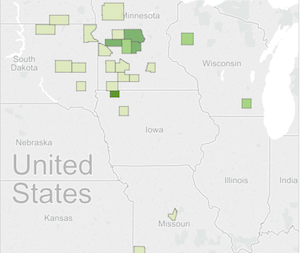Since President Barack Obama signed the Patient Protection and Affordable Care Act into law on March 23, 2010, the legislation has become a giant, political punching bag. The new House of Representatives voted to repeal the ACA as its first act of business. The House has not yet offered an alternative.
Meanwhile, the nation's health care becomes ever more expensive and excludes more people from care. For 2009, despite a record low 4 percent increase in overall costs, health care consumed 17.6 percent of gross domestic product (vs. 16.6 percent in 2008). This translated into $2.5 trillion or $8,066 per person for that year.
Because of declining revenues and rising demand and cost for health-care services, the percentage of total federal spending for health increased from 37.6 percent in 2008 to 54.2 in 2009. In 2010, the number of Americans without health insurance rose to 50 million. Medical expenses remain a major factor in personal bankruptcies.
We are paying progressively more for health care, while more Americans go without.
The ACA is not perfect, but I consider it a good starting point. The best synopsis that I have found is at www.acponline.org/advocacy/where_we_stand/access/new_hc_law.pdf. A number of reforms are already under way.
Some of the benefits for 2010 included:
* Adult dependents can remain on family health insurance plans until age 26.
* Individuals with pre-existing health-care conditions who have been uninsured for at least six months can purchase health insurance through a temporary program until permanent options become available in 2014.
* Small-business tax credits up to 35 percent allow qualifying companies to purchase health insurance for their work force.
* A National Health Care Workforce Commission will analyze and address shortages among providers, such as primary-care physicians.
* New health plans must provide a number of preventive services such as immunizations and mammograms without additional charge.
* A $250 rebate is provided for Medicare subscribers to offset uncovered costs for medication.
A sample of changes for 2011 includes:
* Co-payments for many preventive-care services are eliminated for Medicare, and the payment gap in the Medicare Drug program is reduced. The gap will disappear in 2020.
* Primary-care providers receive a 10 percent bonus for care of Medicare patients.
* Primary-care training programs in clinic settings will receive federal assistance.
* Funding is provided for coordinating care and preventing chronic illnesses among Medicaid recipients and for development of new models for providing and paying for services.
* States will receive funding for setting up health-insurance exchanges to permit wider choice of health plans for businesses and individuals.
All provisions of the ACA will not become effective until 2020.
Changes between now and 2016 will address reducing overall costs while decreasing the ranks of the uninsured by an estimated 34 million. This is accomplished by forming insurance exchanges within each state and broadening Medicaid eligibility. Comparative studies will address effectiveness of competing therapies. Coordination of often fragmented care will be addressed.
The most controversial component of the ACA is the requirement that all Americans have health insurance by 2016. The so-called "individual mandate" has drawn multiple court challenges. Unless everyone is required to have health insurance, any health-reform scenario will fail. People cannot wait until they are ill or injured to obtain health insurance. Health-insurance costs must be spread over a large population if premiums are to be affordable.
The biggest challenge for the ACA will be control of runaway medical costs. Steps toward this end will be examined in future columns.
Critics of ACA must do more than blast the act. They owe the public credible, affordable alternatives.
E-mail Clif Cleaveland at cleaveland1000@comcast.net.
